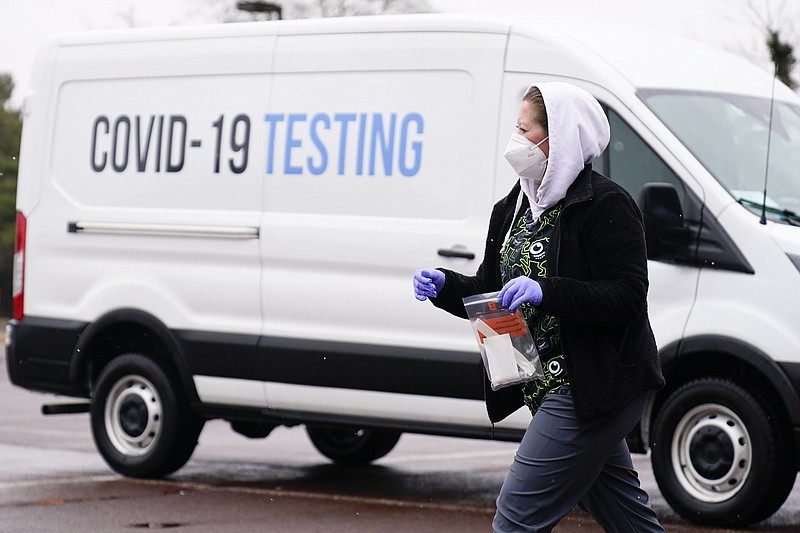The latest surge of coronavirus cases powered by the omicron variant has caused extremely high numbers of employees to miss work because of illness, exacerbating the country's persistent labor shortages and threatening to complicate the labor market's push toward pre-pandemic employment levels.
Between Dec. 29 and Jan. 10, approximately 8.8 million workers reported not working because they were sick with the coronavirus or caring for someone who was, according to new data from the Census Bureau.
Those numbers are nearly triple the levels from the first two weeks of December, before cases had started to peak around the country. They were also the highest numbers since the agency started taking the survey in April 2020 -- well over last January's peak of 6.6 million workers out.
The statistics point to the substantial disruption the variant has caused businesses and workers at a key moment in the nation's recovery.
Inflation, driven in part by supply chain issues and shortages overseas, is wiping out wage gains made by many workers, as the cost of essential goods such as food and gas continue to rise. And businesses in lower-wage fields have complained for months that their operations have been hampered by a shortage of available staff.
[CORONAVIRUS: Click here for our complete coverage » arkansasonline.com/coronavirus]
"Unfortunately, the biggest issue about omicron is it's no longer just fear of contagion and aversion to in-person activity, but it's actually causing acute labor shortages from the sheer number of people who are out sick," said Diane Swonk, economist at accounting firm Grant Thornton.
In recent weeks, reports have documented severe worker shortages in industries such as trucking -- a crucial component of the country's supply chain -- port logistics, air travel, food sales and essential services like garbage collection, firefighting and policing.
"This is a different dynamic than we've had," Swonk said of the omicron surge. "The only silver lining is that it tends to go quickly."
Department store Macy's shortened store hours in January by two hours each day. The Smithsonian reduced hours at most of its Washington-area museums and closed the National Air and Space Museum this month.
United Airlines Chief Executive Officer Scott Kirby said recently that nearly a third of its employees at its transit hub in Newark called out sick in one day.
Hospitals, already dealing with labor challenges as many nurses have moved on to other careers after burning out from the pandemic, have been hit again with a double-edged sword recently, as infections among staff rise just as their care demands from the virus increase.
'SICK OF THIS'
"It is absolutely what is making this surge more difficult than even the surge last winter," said Brett McClain, chief operating officer of the Sharp HealthCare system in San Diego. Staff absences because of illness peaked Tuesday, with some 1,500 out of 19,000 employees out, McClain said -- nearly 8%.
"The last six months have been a big challenge," McClain said. "We're all tired, we're all sick of this, we're all frustrated by everything going on, so unfortunately it has absolutely impacted the workforce overall. Then you have your staff that are now infected in greater numbers than ever before."
LaRay Brown, CEO of Interfaith Medical Center in Brooklyn, said about 7% of her staff -- between 330 and 350 people -- had been out daily earlier in the month but that the numbers had been improving recently.
RIPPLE EFFECT
Jerry Akers, the owner of Great Clips franchises in Iowa and Nebraska, said anywhere from 5 to 8% of his 180-person workforce is either out sick or caring for a family member who is.
He estimates that about two to four of the salons are closed daily because of that, dating all the way back to Christmas. He, too, had been dealing with challenges finding available workers since long before the latest surge.
Information for this article was contributed by Andrew Van Dam and Aaron Gregg of The Washington Post.
